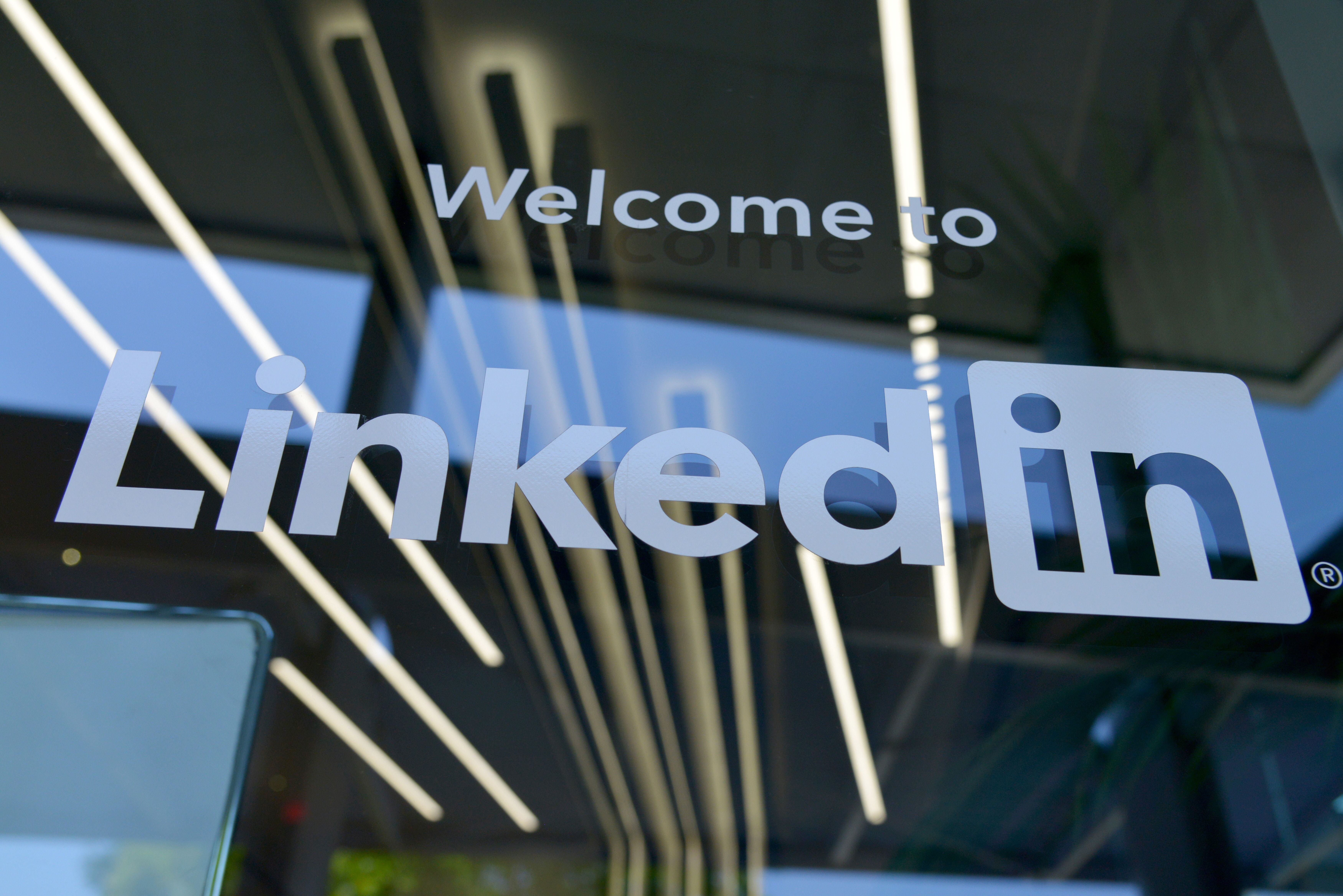Marketing Strategy
Branding
Activations
Social Media
Get to know us


Jordan Stachini
Contents
Understanding how empowering employees to have their own individual LinkedIn strategy can benefit your business, is key in the current sales and business development landscape. This strategy steers away from the traditional use of company pages on LinkedIn. While it may be orchestrated or influenced by the business as a route to the market, we'll show you how an individual's strategic use of LinkedIn can really amp up awareness of a business, its services, and build rapport with customers. The goal is to position the individuals within the business as authorities and experts within their industry or sector…and shock horror, as actual human beings, with actual real lives and real life experiences.
So, what does your current LinkedIn strategy look like? Are you new to LinkedIn or have you been here a while? Are you truly leveraging the full spectrum of LinkedIn's capabilities for your business marketing needs? You might not know which social media channels your business should be using, but we’re pretty sure LinkedIn is the way to go for b2b brands.
If you haven’t already noticed, LinkedIn’s changed from a strictly formal and professional platform into a more dynamic and engaging space. It’s not just for recruiters or job seekers anymore. It's become this buzzing hub where professionals, businesses, and even content creators come together to network, share ideas, and showcase their expertise. You’ll see there’s a demand for users to share personal narratives, industry insights, and behind-the-scenes glimpses into their professional journeys, transcending the traditional ways of using LinkedIn.
Don’t rely solely on your company’s LinkedIn profile to promote your business. In fact, we don’t think you should do this at all, to be honest. Your next move is to recognise the potential of personal brand advocacy. Ok, so wtf does ‘brand advocacy’ mean? In short, it means turning your employees into mouth pieces for your business, for your services and creating humanised routes to market that your target audience can relate to. The result? You’ll see a mega change in your brand visibility, authenticity, reach, and credibility. So, let's delve into some key marketing strategies that will unlock the true power of LinkedIn for your business.

Who should have a personal LinkedIn strategy? 👀
Who reaps the most benefits from having this kind of brand presence on LinkedIn? It's not a one-size-fits-all approach; not every business needs to follow this route. Not every business needs their employees to have a personal profile overhaul, but for those in business development, sales, or fee-earning positions, investing in your LinkedIn presence will be a game changer. This extends to senior team members and business leaders, as these key players have the potential to become dynamic brand advocates, departing from the traditional use of company pages.
Through strategic displays of expertise and personal narratives, they can position themselves as authoritative figures within their industry or sector. This departure from LinkedIn's rigid, formal atmosphere to a more engaging space has changed the way people interact with brands. Look at this personal brand advocacy as a unique opportunity to build your personal brand, and in turn, amplify your business impact.

Employee Brand Advocacy on LinkedIn
When it comes to LinkedIn management, you need to have an understanding of how the social media platform works. More and more businesses are spending less time on their company profiles because they’ve found something better … personal brand advocacy. By encouraging individuals to proactively promote your business on their personal LinkedIn profiles, brands can tap into the power of personal branding and foster a more authentic and engaging presence within their industry network.
But why employees? People buy from people. Having your employees as brand advocates on the platform helps you to humanise your brand with the authentic representation and expertise of your team members. Who would you trust more – a company profile’s perspective or an employee’s perspective?
So how do you go about it? Here are a few ways you can effectively foster personal brand advocacy among your employees:
1. Thought Leadership
Empower individuals within the organisation to showcase their expertise and thought leadership on their personal LinkedIn profiles. Get them to share valuable insights, industry trends, and original content that not only position them as authoritative voices in their respective fields but also reflect positively on the brand's overall expertise. Give them the freedom to have their own voice on this platform. This is important. Don’t make them pretend to be someone they’re not. Yes, you want them to speak for your brand. But it shouldn’t be forced.
2. Provide Guidance and Resources
Invest in your employees. Offer comprehensive guidance and resources to help employees optimise their LinkedIn profiles. This can include tips on how to raise their LinkedIn profile or you might sort them out with some LinkedIn training. They must know how to approach this platform. Remember, LinkedIn is so different to the likes of Facebook, Instagram, and TikTok. You are investing in your brand by equipping employees with the necessary tools and knowledge. Surely you’d be more confident knowing that there’s a consistent and professional representation of your brand across individual profiles. As a result, your employees will be able to:
👉Create compelling content
👉Have a consistent tone of voice
👉Leverage LinkedIn’s publishing capabilities
👉Utilise suitable multimedia to engage with connections
We all know the importance of brand identity and owning your sh*t. If you don’t invest in guidance and resources for your employees, you’re setting your brand up to fail.
3. Foster Authentic Engagement
Encourage employees to engage authentically with their professional network by participating in relevant discussions, sharing meaningful content, and building genuine relationships. What do we mean by ‘authentically’? Make sure your employees are staying true to your brand. But also let them be their authentic selves. You’ll find that there are a lot of bullsh*tters on LinkedIn. Don’t let your employee be one of them.
Emphasise the importance of adding value to conversations rather than solely promoting the brand. The brand-related content on your employee’s profile shouldn’t read like a sales pitch. If you want to establish trust and credibility within the industry, being authentic, relatable, and honest is key. Eventually, your services or products will speak for themselves.
4. Showcase Personal Stories and Experiences
This is key to being relatable in your LinkedIn community. The thing you have least in common with your customers is that they require a service that you provide. Encourage your employees to talk about their personal experiences… and not just the good stuff, it’s not going to paint a realistic picture. Encourage them to discuss any low points, challenges and journeys they’ve been on, whether it’s work/brand-related or not. You’ll find that this sparks the most engagement in many cases. It’s boring scrolling down a feed that only talks about the successes, as it’s not always relatable.
Not everyone can be a 22 year old founder of a successful start-up business. But sometimes … that sort of content is all you see on LinkedIn. There’s nothing wrong with working for a company and having a 9-5 life so get your employee to showcase this. Why? Because it’s relatable and will help to humanise the brand, creating authentic connections with their audience. Highlighting personal stories and experiences of employees within the organisation will demonstrate the human side of your business. You’ll be reflected as a brand that cares about its employees and their voice.
A little advice … your employee’s profile shouldn’t just be a mere collection of brand-related facts and figures because let’s be honest, that’s a bit boring 🥱. Personal branding allows you to leave a lasting impression. You want to entice followers to delve deeper into your business by following this personal brand journey. This approach not only expands brand reach but also humanises its image, making it more relatable and trustworthy in the eyes of the LinkedIn community.
5. Implement Employee Advocacy Programs
Implement structured employee advocacy programs that incentivise and recognise employees for creating a recognisable presence, personal following and actively promoting the brand's services on their personal LinkedIn profiles. These programs can include LinkedIn training for business sessions, rewards for top advocates, and internal campaigns that encourage participation and foster a sense of collective ownership in the brand's success.

Engaging Your Followers with Quality Content
So now you have your own personal brand advocates. What next? It’s so easy to say you need to make sure you’re consistently providing quality content across LinkedIn. But HOW do you actually do this? It takes A LOT of work and it needs to be consistent. So here’s a few tips to get you started:
Prompt and Personalised Responses
Act fast in replying to any comments, messages, or inquiries you receive. Personalise your responses. Don’t be a robot, show some personality. There’s nothing worse than receiving a message that’s stale and impersonal. Show an interest in building these relationships.
Initiate Meaningful Conversations
We all know the LinkedIn algorithm loves people that comment a fu*k load on other people’s content. Get your employees to do the same. But please, for the love of God, don’t get them to simply reiterate what’s already been said in the post they are engaging with. There’s nothing worse than writing a sh*thot post you’re proud of and having someone in your comments saying the EXACT same thing but in different words. What’s the point? If you can’t add value to the conversation, then it's pointless.
Initiate conversations by asking thought-provoking questions, seeking opinions on relevant industry topics, or sharing insightful content that sparks these discussions. Soon enough, your employee will be positioned as a valuable resource within their professional networks. Just think before you engage – is it going to add value to the discussion?
Share Relevant and Valuable Content
What’s relevant and valuable content? You need to think about your brand first. What industry news, trends, or informative articles might resonate with your followers' interests? What personal stories and experiences can you share that other people will relate to? These are things to consider when formulating your content. By providing value to their connections, employees can establish themselves as trusted sources of information, as well as real people with real experiences to share . When it comes to content, you need to speak to your audience’s needs. Have a unique brand voice, foster a culture of active participation, and watch your LinkedIn game change for the better. Our Fieldfisher case study is proof that this strategy works. 👌
Participate in Group Discussions
Encourage employees to actively participate in relevant LinkedIn groups and industry-specific communities. It doesn’t matter if they aren’t educated in all areas. You can help them out. Engaging in group discussions allows employees to connect with like-minded professionals, share their expertise, and contribute to the collective knowledge within their industry.
Acknowledge and Appreciate Followers
Just as you would do if you had a company profile, show any followers some love. Make it known to your employee the importance of acknowledging and appreciating their followers. This might be responding to comments, acknowledging their contributions, engaging with the content of loyal followers, or it might be expressing gratitude for their support. This type of engagement should never be ignored. Don’t just post and ghost. It won’t work.To truly foster a sense of community, your employee must always respond to any interaction with their personal brand.
The Power of LinkedInfluencers on LinkedIn
Moving away from employees for just a second, let’s look at the rise of LinkedInfluencers. We’re talking about an individual who has established a significant presence and influence on the LinkedIn platform. It’s called personal branding and they’re recognised for their:
👉Expertise
👉Thought leadership
👉Ability to engage and inspire their professional audience through their content, insights, and contributions.
Bet you’re thinking, okay … but what the fu*k does this have to do with my brand?
Collaboration for Brand Growth
LinkedInfluencers are seen as authoritative figures in their industries, driving conversations and sharing valuable knowledge within the LinkedIn community. Collaborating with them can expand your brand's reach, enhance credibility, and foster meaningful connections.
Accessing Engaged Networks
You can tap into their networks and reach a highly engaged and relevant audience that values their insights and recommendations. This collaboration can help build brand awareness, establish thought leadership, and foster trust among your target audience.
Strategic Alignment and Brand Association
When selecting a LinkedIn influencer to collaborate with, it's essential to ensure their values and expertise align closely with your brand's mission and target audience. A strategic brand match-up will ensure a more impactful and authentic collaboration.
Enriching Content Strategy
Working with LinkedInfluencers allows you to benefit from their unique perspectives and storytelling approaches. This infusion of varied viewpoints can spice up your content and make it more resonant and relatable to your target audience, ultimately driving brand growth and engagement.

Utilising LinkedIn's Analytics for Growth
Data is the fuel that carries your LinkedIn strategy forward. Leverage LinkedIn's robust analytics to gain valuable insights into the performance of your employee’s content, their follower’s behaviours, and the effectiveness of engagement strategies. Here’s how brand’s can use LinkedIn’s analytics for strategic growth:
Audience Insights and Demographics
Utilise LinkedIn's analytics to gain a comprehensive understanding of the audience demographics engaging with your employees' profiles and content. Look at key metrics such as industry preferences, job titles, and geographical locations to tailor your content and messaging for maximum relevance and impact.
Content Performance Analysis
Dive into the performance metrics of the content shared by your employees to identify what resonates the most with your audience. Evaluate metrics such as likes, comments, shares, and click-through rates to determine the type of content that gets the most engagement and adjust your content strategy accordingly. Be careful though. Don’t let metrics such as likes and comments define your WHOLE strategy. Sometimes, it’s much more than that.
Optimising Posting Schedules
Use LinkedIn's analytics to identify the best times for posting content based on when your audience is most active. This will take a bit of time but soon enough you should be able to see a trend. By strategically scheduling your content to align with peak engagement periods, you can maximise the visibility and impact of your employees' posts and increase the likelihood of reaching a broader audience.
Follower Growth and Engagement Rate
Monitor the growth of your employees' follower base and track the engagement rate to assess the effectiveness of your content strategy over time. If those followers aren’t going up … why? Identify trends in follower growth and engagement to refine your approach and focus on content that drives consistent and meaningful interactions with your audience.
Comparative Analysis with Competitors
Who are your competitors? What are they doing that you might not be? Leverage LinkedIn's analytics to conduct a comparative analysis of your employees' profiles and content performance against those dreaded competitors. Evaluate key performance indicators and industry benchmarks to gain insights into areas for improvement and identify unique strategies that set your brand apart in the competitive landscape.
Refining Employee Advocacy Programs
Utilise LinkedIn's analytics to measure the impact of your employee advocacy programs and initiatives. Evaluate the performance of employees participating in the program, identify top advocates, and recognise the contributions that drive the most significant impact on brand visibility and engagement.
By harnessing the power of LinkedIn's analytics, your employees can refine their approach, identify trends, and make data-driven decisions that drive sustainable growth for your business. Track this progress, experiment with different content formats, and fine-tune the strategy based on the insights. Don’t worry if you’ve seen content that’s flopped. We’ve all been there … just use that to inform your strategy for the future.
We hope this helps you in your LinkedIn journey. By empowering employee brand advocacy on LinkedIn, engaging your followers with quality content, collaborating with LinkedInfluencers and utilising LinkedIn's analytics, you can position your brand as being mega. This is how you can use LinkedIn effectively. Embrace these strategies, infuse them with your brand's unique flair, and watch as your business takes off over time.
Fancy some LinkedIn training? Here at co&co, we offer tailored interactive workshops, content writing sessions and help with branded asset creation. If you feel ready to make sh*t happen, let’s talk. We’re mega at it … promise. It’s why we do what we do.

Speak to Jordan today
Grab a brew. Have a read
You might also like...






